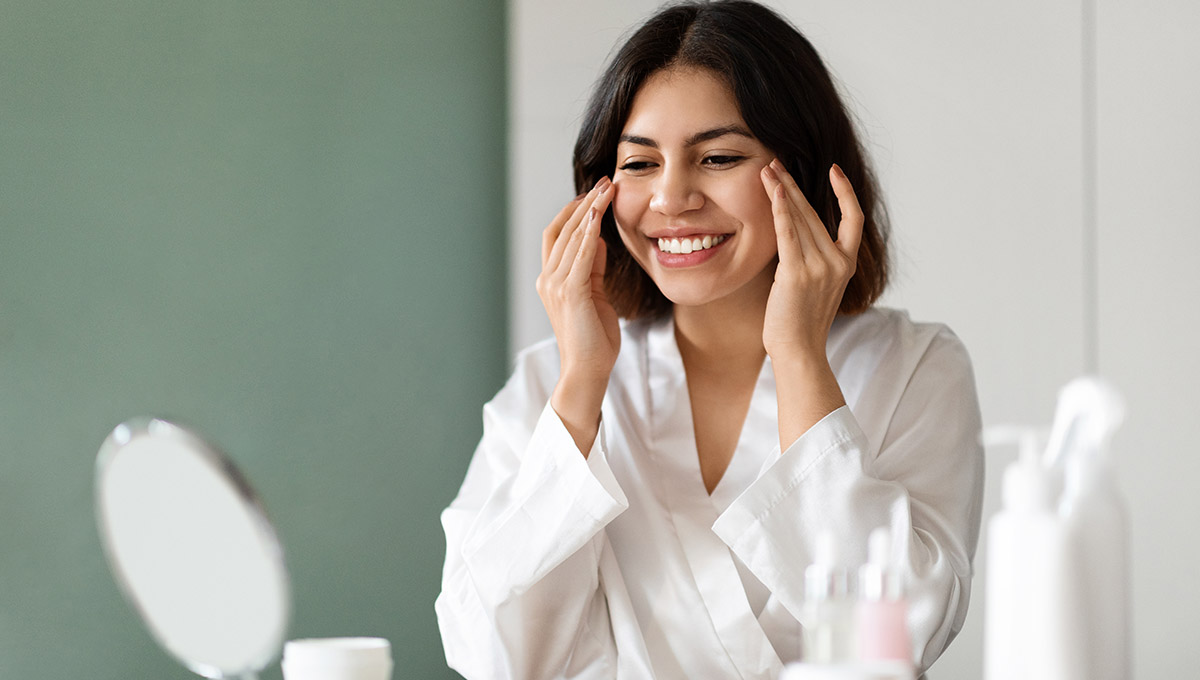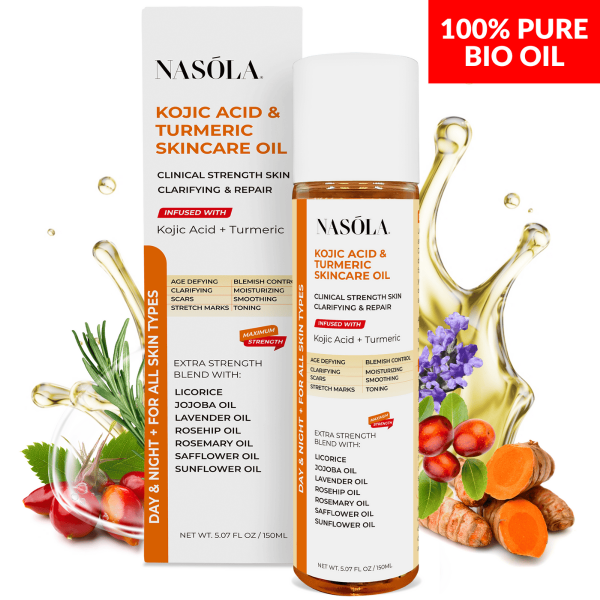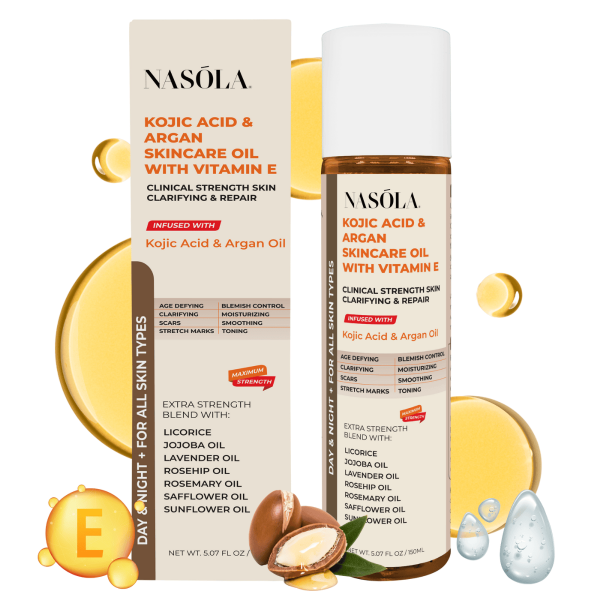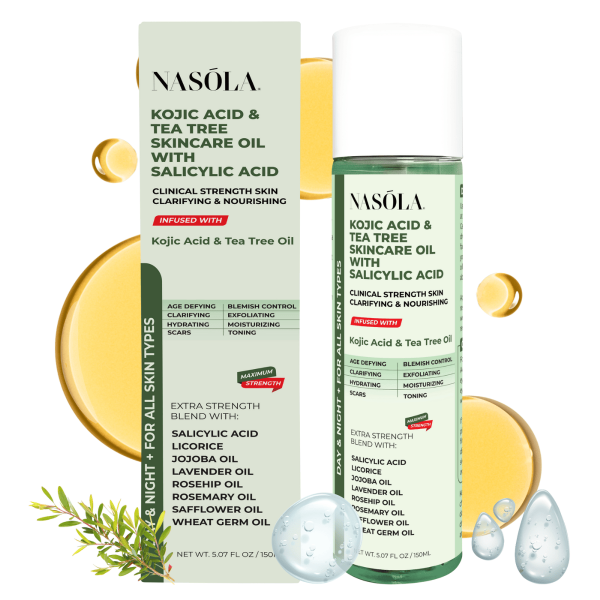If you’ve ever stared at your mirror wondering why your face still looks dull even after religiously using the cleansers, toners, masks, and magic serums… trust me, you’re far from alone.
Let me introduce you to something that’s low-key revolutionary… oilplaning. Yes — it’s exactly what it sounds like: using oil + a blade to exfoliate your skin like it’s velvet.
Sounds risky? Actually, it’s genius. This gentle technique is quietly taking over skincare routines everywhere – and for good reason. It removes dead skin, peach fuzz, and buildup while leaving your skin mega-smooth and glowing.
But here’s the thing — the oil you use? Changes everything. Using powerhouse blends like the Nasola Kojic Acid + Turmeric Skincare Bio Oil is like giving your skin a golden Hour redo… every time.
Ready to unlock smoother, brighter, more touchable skin?
Let’s go there — ⚡️
What is Oilplaning?
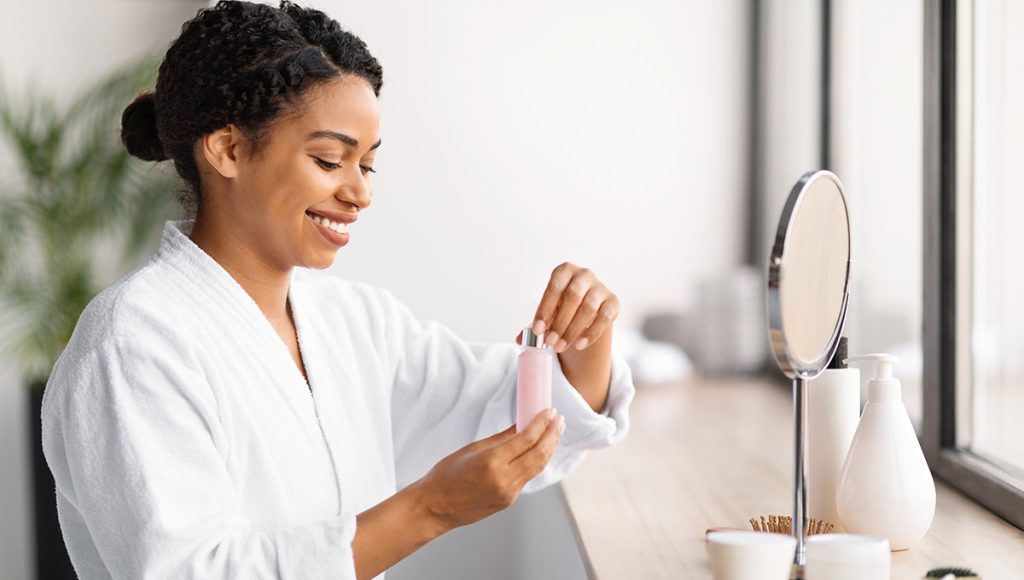
So, what is oilplaning, really? At its core, oilplaning is the perfect marriage between facial oil and dermaplaning — a kind of exfoliation method that uses a sterile blade to remove dead skin cells and peach fuzz.
What sets oilplaning apart from traditional exfoliating methods is the addition of oil before the blade touches your skin.
Why? Because the oil acts as a cushion — reducing friction, preventing irritation, and creating a silky surface for the blade to glide on. Unlike harsher methods, oilplaning leaves your skin radiant, balanced, and more resilient.
Now, if you’ve got dull skin, uneven tone, or those pesky dark spots that sneak up during dry months, this format can absolutely become your new go-to.
And speaking of glow…
Say hello to this queen: Kojic Acid + Turmeric Skincare Bio-Oil. Packed with turmeric — a natural anti-inflammatory — and kojic acid, a brightening agent, this oil fights both dullness and uneven tone. Pairing this oil with your oilplaning ritual quite literally lights up your skin tone.
Turmeric
Turmeric isn’t just the trendy latte ingredient — it’s a skin powerhouse. When applied topically, it reduces redness, soothes inflamed skin, and fades dark spots over time. It also supports skin healing post-exfoliation — a perfect match for oilplaning days.
Now the best part? When you oilplane with turmeric-infused formulas like the Nasola Turmeric Bio-Oil, your skin absorbs the benefits more effectively, thanks to the increased permeability from exfoliation. Glow goals, unlocked.
Kojic Acid
Derived from fermented rice, kojic acid is revered for its skin-brightening abilities. It targets stubborn hyperpigmentation, sun spots, and melasma by inhibiting melanin production. Using a kojic acid oil during oilplaning not only preps your canvas—it actively starts working on tone correction as you exfoliate.
Magic? No. Science + consistency + the right ingredients = visible transformation. Trust me, I’ve seen it firsthand.
Why people love oilplaning:
- Softer, silkier skin after ONE session.
- Better absorption of skincare serums.
- Makeup sits like butter on your face.
- Helps reduce appearance of dullness and patchiness.
Oilplaning vs Dermaplaning
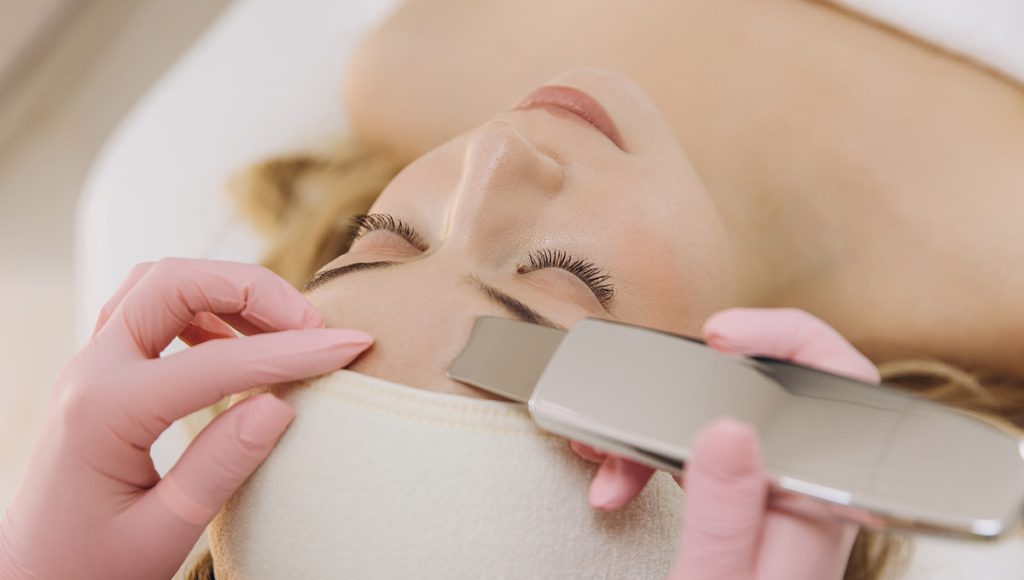
Now, let’s settle a VERY common confusion: oilplaning vs dermaplaning.
They both involve a blade — yep.
But the difference lies in the experience and the aftermath. While dry dermaplaning involves scraping across bare skin (yikes), oilplaning involves a nourishing oil base that protects your barrier and enhances glide.
Hydration level? Sky-high.
Sensitivity? Way reduced.
Post-glow? Unreal.
People with sensitive, reactive, or acne-prone skin often find oilplaning a thousand times more forgiving — and effective — than rubbing a blade over dry skin.
Speaking of acne-prone skin…
Cue in: Kojic Acid + Tea Tree Skincare Bio-Oil with Salicylic Acid. This oil is specially tailored for anyone who breaks out even thinking about exfoliation. With tea tree oil’s natural antibacterial properties and salicylic acid’s pore-unclogging superpowers, this oil is a skin-saver.
Tea Tree Oil
Tea tree oil is ideal if blemishes have been your long-term nemesis. It zaps acne-causing bacteria, seals off irritation, and calms inflammation – all without stripping your skin. When used in oilplaning, it gives a protective and purifying layer, so your skin gets the benefits without the backlash.
Salicylic Acid
This beta-hydroxy acid goes beyond surface-level kindness; it penetrates deep into your pores and clears out debris and oil. Adding salicylic acid into your oilplaning oil allows for dual-action: exfoliation + breakout prevention. It’s like a skincare mic drop.
So if dermaplaning wrecks your skin but you’re craving that silky post-treatment texture?
Try oilplaning. And start with this calming, clarifying oil by Nasola.
Key Differences Between Oilplaning & Dermaplaning:
- Oilplaning adds hydration during exfoliation.
- It’s less likely to cause redness or razor burn.
- Great for sensitive, reactive, or dry skin.
- Usually delivers better glow with less irritation.
Oilplaning Oil: Choosing the Right One
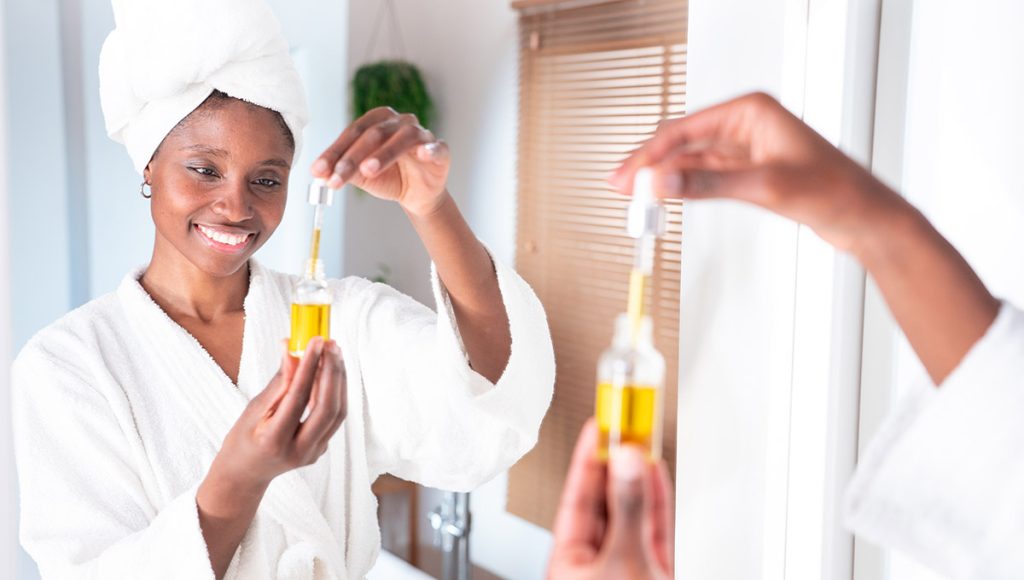
Choosing the right oil for oilplaning isn’t just preference — it’s strategy. A great oilplaning oil is non-comedogenic, rich in antioxidants, and specifically tuned to your skin type. You’re not just gliding a blade — you’re treating your skin at the same time.
What should you look for?
- Soothing botanical ingredients.
- Zero pore-clogging fillers.
- Nutrient-rich and fast-absorbing formulas.
- Antioxidants and brightening agents.
Nasola delivers elite options no matter your skin challenge:
- Kojic Acid + Argan Bio-Oil – Best for dry or aging skin. Argan oil restores elasticity and deeply moisturizes.
- Kojic Acid + Tea Tree Bio-Oil – Perfect for blemish-prone or combination skin. Calming and balancing.
- Kojic Acid + Turmeric Bio-Oil – Laser-focuses on dullness and discoloration.
Argan Oil
Known as “liquid gold,” argan oil is packed with antioxidants, Vitamin E, and fatty acids. It hydrates deeply, reduces the appearance of wrinkles, and boosts skin elasticity — especially important when exfoliating mature or dry skin. Post-oilplaning, it helps lock in moisture and comfort.
Matching Oil with Skin Type
Still not sure where you fall?
- Dry/aging skin → Argan extract = comfort and elasticity.
- Uneven skin tone → Kojic + turmeric = a glowy complexion over time.
- Oily/acne-prone → Tea tree + salicylic acid = balance and clarity.
Best Oil for Oilplaning
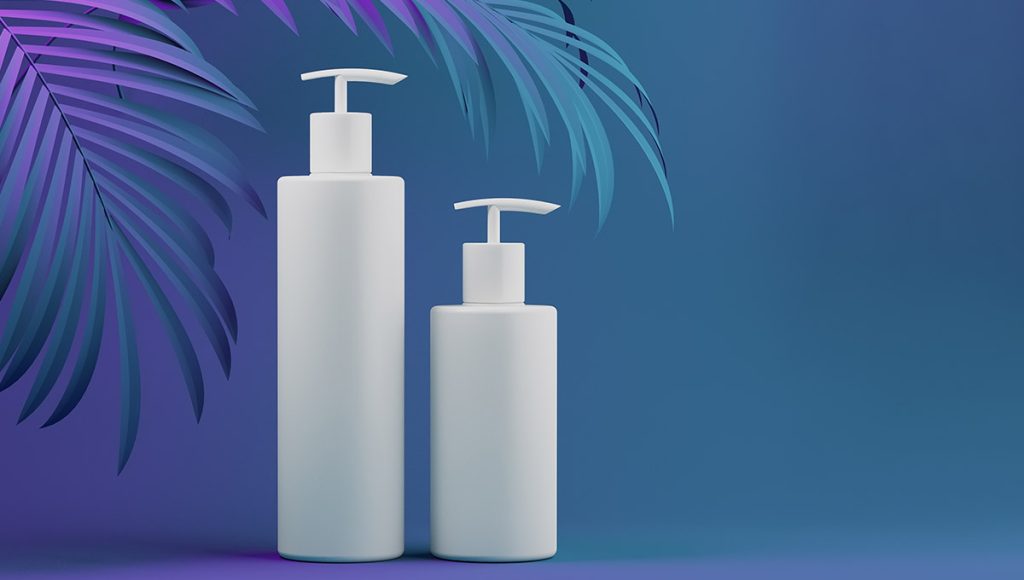
Let’s simplify it. Yes, you could stick to basic jojoba or grapeseed oil… but why settle?
The best oil for oilplaning doesn’t just lubricate — it treats. Nasola oils offer premium blends with multi-functional actives your skin will inhale (in the best way).
These oils aren’t just extras — they’re the main event.
Top Picks:
- Glow Goals: Kojic Acid + Turmeric Bio-Oil
- Breakout Control: Kojic Acid + Tea Tree Bio-Oil
- Moisture Magnet: Kojic Acid + Argan Bio-Oil
Before you try, remember:
- Always patch test new oils 24 hours beforehand.
- Make sure the oil isn’t too thick (avoid coconut oil, please!)
- Don’t skip SPF after oilplaning — your skin will be more sun-sensitive.
- Keep those blades sharp, clean, and single-use!
Oilplaning Steps: How to Do It Safely at Home

A flawless oilplaning routine isn’t just technique — it’s intention. Whether you’re prepping for a glam event or just want to give your skin its moment, technique and quality matter.
Here’s a step-by-step routine that combines safety with results:
- Cleanse your skin thoroughly with a hydrating cleanser. Never start oilplaning with makeup or SPF residue!
- Apply a few drops of one of Nasola’s Kojic Acid Bio-Oils — this creates a gliding surface and delivers nutrients.
- Hold a dermaplane blade at 45 degrees, then gently scrape downward in short, feather-like strokes.
- Wipe off blade frequently on a clean cotton round. Don’t forget the jawline and upper lip.
- Tone or rinse gently, then apply your favorite moisturizer and SPF.
Pro Tips for Safe Oilplaning
- Never reuse blades. Bacteria loves old blades.
- Don’t oilplane over cystic acne or open wounds.
- Don’t press hard — let glide and gravity do the work.
- Limit to 1–2x per month to avoid over-exfoliation.
When you pair oilplaning with Nasola’s nutrient-rich bio-oils, you’re not just exfoliating… you’re transforming.
Kojic Acid: The Power Ingredient in Oilplaning Oils
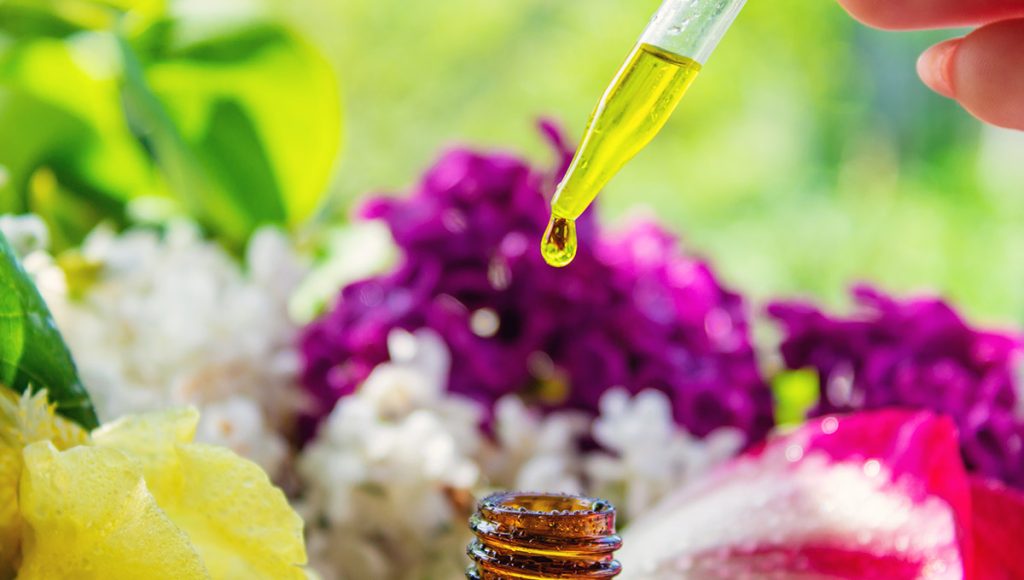
Kojic Acid deserves a little spotlight of its own — and here’s why.
This natural skin-brightening agent is derived from fermented rice or mushrooms and works by blocking melanin production. It’s gentle, proven, and pairs perfectly with exfoliating methods like oilplaning for a one-two punch of cell turnover and tone correction.
Kojic Acid Benefits:
- Gently fades age spots, melasma, and sun damage.
- Lightens scar pigmentation.
- Enhances results of other skincare products post-exfoliation.
- Ideal for all Fitzpatrick skin types — and sensitive skin when paired with oils.
In every Nasola oil, it’s not just an add-on. It’s the star of the show.
Conclusion
Skincare shouldn’t be complicated — just smart. Oilplaning is proof of that. By adding the right oil before exfoliating, you protect your skin, nourish it, and get results that speak loudly.
Whether you’re craving smooth makeup days, less dullness, or finally fading those dark spots — oilplaning can help get you there.
Best part? Nasola’s trio of Kojic Acid Bio-Oils meets you right where your skin is — dry, acne-prone, or uneven. Each one is purposeful, effective, and backed by ingredients that love your face as much as you do.
Glow starts now — all it takes is a blade, a bottle, and YOU.
Frequently Asked Questions
Yes! Oilplaning is much gentler than dry dermaplaning, making it a great option for sensitive skin. Oils like the Kojic Acid + Argan Bio-Oil provide a protective cushion and help prevent irritation.
Not really. It’s important to use oils formulated for facial skin and specific concerns. Nasola oils target different issues — dullness, acne, or dryness — while remaining non-comedogenic.
That depends on your skin type. Oilplaning is generally better for dry or sensitive skin since the oil minimizes friction. Dermaplaning on dry skin may work faster but is more likely to irritate.
No more than 1–2 times per month. Your skin needs time to regenerate, and overdoing it can compromise the barrier. Stick to a monthly schedule for best results.
If you want to brighten tired, uneven skin, go for the Kojic Acid + Turmeric Bio-Oil. Turmeric + kojic acid work in harmony to visibly enhance skin tone.
Absolutely! Follow up immediately with a nourishing moisturizer to lock in hydration. Don’t skip SPF in the morning — your skin is more photo-sensitive after exfoliation.
As long as you’re not dealing with inflamed acne or open blemishes, yes. Use Kojic Acid + Tea Tree with Salicylic Acid to treat while exfoliating.
Nope. It won’t change the thickness, color, or speed of hair growth. It only removes the soft “peach fuzz” (vellus hair) temporarily.
Avoid if you have open wounds, active cystic acne, or are using retinoids. Give your skin a break until it stabilizes.
Yes, daily use of kojic acid in a blend like Nasola’s bio-oils helps maintain improvement in skin tone between sessions.

